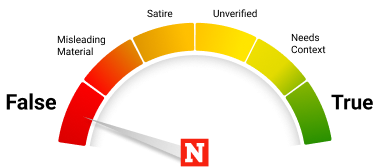A comet zooming towards the inner solar system could soon be visible to the naked eye if current astronomical predictions turn out to be true.
C/2022 E3 (ZTF) was discovered by the Zwicky Transient Facility (ZTF)—an astronomical survey conducted by the Palomar Observatory in California—on March 2, 2022.
Comets are astronomical objects made up of frozen gases, dust and rock that orbit the sun. Sometimes referred to as cosmic snowballs, these objects are blasted with increasing amounts of radiation as they approach our star releasing gases and debris.
The cosmic snowball—currently located more than 68 million miles from Earth—is set to reach its closest point to the sun, or perihelion, on January 12, 2023. The comet is currently visible through telescopes in the constellation Corona Borealis.
After perihelion, C/2022 E3 (ZTF) will make its closest approach to Earth on February 1, by which point it could be just about bright enough to be seen with the unaided eye. But predicting the brightness of comets is notoriously difficult and this is not a given.
While exciting to astronomers and the general public alike, events like these can fuel inaccurate or misleading claims that could be taken as facts.
The Claim
A tweet regarding comet C/2022 E3 (ZTF) that was posted on January 4 has gone viral, racking up more than 10.3 million views to date.
The Twitter post has received more than 150,000 likes and has been retweeted more than 17,000 times, with many social media users replying in the comments.
On February 1st-2nd, a comet will pass by earth and will be visible by the naked eye. This phenomenon has not happened in 10,000 years. pic.twitter.com/VX2XRLODEA
— Daily Loud (@DailyLoud) January 4, 2023
"On February 1st-2nd, a comet will pass by earth and will be visible by the naked eye. This phenomenon has not happened in 10,000 years," the tweet reads.
The Facts
The post's phrasing is somewhat ambiguous, and would be interpreted to indicate either that no comets have been visible with the naked eye from Earth for 10,000 years, or that this particular comet has not been seen in that time period.
Taking the first interpretation into account, that is patently not the case.
When measuring the brightness of astronomical objects, the brighter a given object is, the lower its magnitude. For example, an object with magnitude +2 is brighter than one that has a magnitude of +8. The limit of what the naked eye can see is magnitude +6.
Over the past few hundred years alone, there have been numerous comets that appeared bright enough in the sky to be visible to the naked eye, including several "Great Comets"—those that become exceptionally bright.
Among those that have been visible recently include Comet NEOWISE, which was visible to the unaided eye in the summer of 2020, as it flew past the sun and Earth.
This was the brightest comet in the Northern Hemisphere since Comet Hale–Bopp, which was visible to the naked eye for a record 18 months between May, 1996 and December, 1997.
When it comes to the second interpretation of the tweet, the statement is also questionable. Some astronomical estimates indicate that C/2022 E3 (ZTF) has an orbital period of around 50,000 years or so, according to the University of Virginia and other sources (although this is a rough estimate).

If this figure is accepted, then the last time the comet passed Earth would have been significantly more than 10,000 years ago. We also would not know how bright it would have been and whether or not it was visible to the naked eye given that we do not have astronomical records from this time.
The apparent shape of the comet's orbit—which looks like an open curve—means that it may never return to the inner solar system and will simply keep traveling into deep space, astronomers told Newsweek.
"We don't have an estimate for the furthest it will get from the Earth yet—estimates vary—but if it does return it won't be for at least 50,000 years," Jessica Lee, an astronomer at the Royal Observatory Greenwich in the United Kingdom, said.
Most comets with the type of orbit that C/2022 E3 (ZTF) appears to have will only travel through the solar system once before being slingshotted out by the sun, unless something alters their trajectory. So, it is also possible that the object has never flown past Earth before.
The tweet is also worded to make it sound that C/2022 E3 (ZTF) "will" for certain be visible to the naked eye when it passes Earth at the beginning of February. But as mentioned previously, there is no way to know for sure exactly how bright it will be in the sky after its encounter with the sun, and it is possible that it may never reach naked eye visibility.
Even if it does technically reach this brightness threshold, whether or not you will actually be able to see it without a telescope or binoculars will depend on a variety of factors, such as the level of light pollution where you are and local weather conditions.
The Twitter account did clarify in a subsequent post indicating that there is some uncertainty about the brightness prediction, although this tweet has been viewed around 340,000 times at the time of writing—far less than the original.
The Ruling
False.

Numerous other comets have been visible to the naked eye in recent history.
There is also evidence to suggest that C/2022 E3 (ZTF) last approached Earth far longer than 10,000 years ago, perhaps 50,000 years—or even never before.
Finally, there is no definitive way to tell yet if the comet will actually be visible without a telescope after perihelion.
FACT CHECK BY Newsweek
Uncommon Knowledge
Newsweek is committed to challenging conventional wisdom and finding connections in the search for common ground.
Newsweek is committed to challenging conventional wisdom and finding connections in the search for common ground.
About the writer
Aristos is a Newsweek science reporter with the London, U.K., bureau. He reports on science and health topics, including; animal, ... Read more





